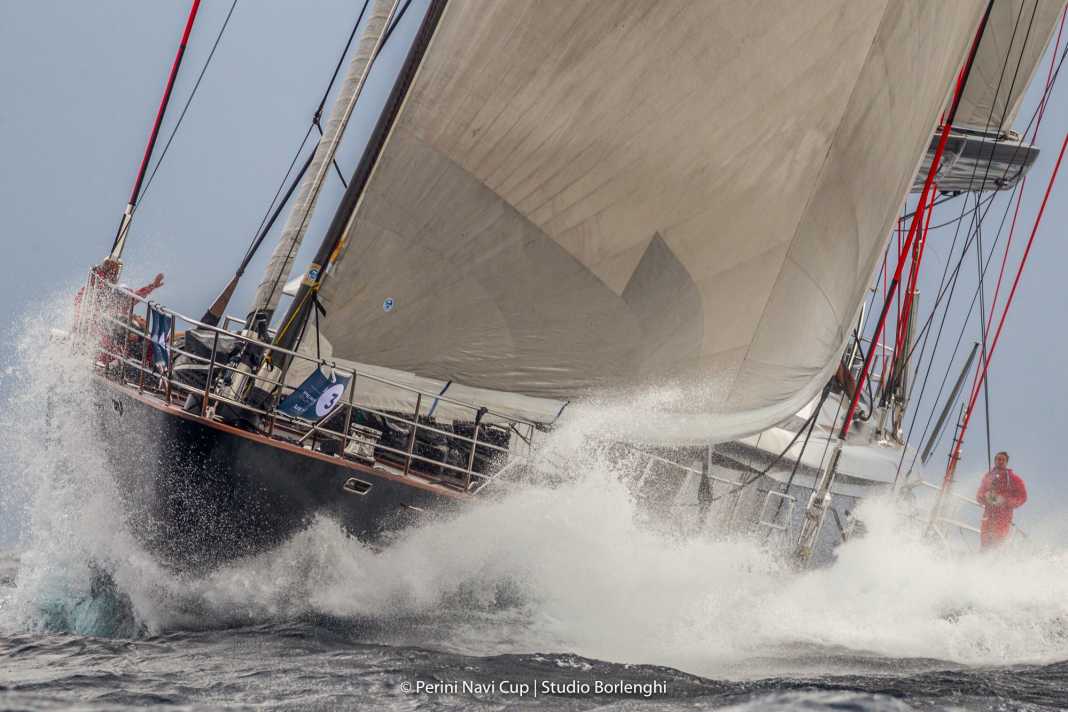





Stephen Edwards was in command of "Bayesian" from April 2015 to June 2020. The Brit worked ashore as an electrical engineer until 2004 and then built up an impressive nautical CV characterised by eleven years on various Perini Navi yachts. This has made him an expert in the operation and systems of tall ships from Viareggio, says the Palma de Mallorca-based captain on LinkedIn. Since October 2020, Edwards has been in charge of the 60-metre ketch "Seahawk", which was created with a carbon mast and rig as one of the sportiest Perinis for Esprit co-founder Jürgen Friedrich.
"I don't want to add to the wild speculation and allegations or in any way hint at what really happened.... Only those who were on board will know, but I can shed some light on the characteristics of the ship and some of the limitations that probably played a role in this disaster." An important point to note is that the hull is based on Perini Navi's 56-metre platform, but Bayesian was the only slip to be launched, unlike her nine ketch-rigged sister ships.
Mast:
The aluminium mast pushed the limits of the design. A few lessons had to be learnt over the years, but the result was a robust and well-controlled rig that worked well within the limits of the design.
Ballast:
The height of the mast was of course taken into account by the Perini engineers in the overall design of the ship. For this purpose, an additional 30 tonnes of lead ballast were added to the keel box. This compensated for the additional mass, the higher centre of gravity and the higher forces of the sails of the slip rig.
Kiel:
The largest lead ballast is probably around 200 tonnes. In addition, there is the movable keel weighing around 60 tonnes, which protruded almost six metres below the keel box when lowered. The main ballast provided the majority of the righting moment. The movable part of the keel functioned more as a centreboard to reduce drift under sail.
Stability:
Yachts such as "Bayesian" are delivered with a Stability Information Book. This document, recognised by the flag state, defines the load and operating limits to be observed by the captain. In 'Bayesian', a section deals with the use of the movable keel and defines when it must be lowered. It had to be lowered under sail and/or when at coastal distances of more than 60 nautical miles (regardless of whether under sail or engine).
The stability book also contains information on righting angles and the watertightness of the hull. There are two important figures here: the angle of vanishing stability and the angle of flooding. The angle of vanishing stability is the angle of heel at which the righting moment of the ship reaches zero, i.e. it no longer rights itself. I've forgotten the exact figures, but it should be around 90 degrees with the keel lowered and 75 degrees with the keel raised."
However, the angle of flooding is much more important in the scenario we are dealing with. This is the angle of heel at which the water begins to enter the ship (usually through the engine room or accommodation ventilation shafts). Once this starts, the ship is in serious trouble as stability is quickly reduced or lost due to flooding. The flooding angle for 'Bayesian' was 40 to 45 degrees.
So if the ventilation flaps are not closed (which is the case with HVAC systems and the generator running, they would NOT be closed, as they need to be open for this), the ship will quickly flood if the heel is greater than the angle of flooding.
Fuselage openings:
Compared to the other 56-metre Perini, "Bayesian" has a ten centimetre higher waterline due to the additional ballast of 30 tonnes. As the only hull hatch, on the port side aft, was very close to the waterline, it was rarely used and could only be opened when the sea was flat and calm. One hundred per cent of the time it was NOT open at night.
There are no opening windows or portholes, all are made of laminated glass bonded to the hull and superstructure. Other deck hatches/ superstructure openings that could affect watertightness are located amidships or nearby. In order for these to take in water when open, the ship would have to heel far beyond the aforementioned flooding angle and therefore already be flooded via pipes/vent openings.
Only one opening was located far from amidships and could be susceptible to flooding at lower heeling, the deck access to the lazarette in the stern. As it is located on the port side of the aft deck, it would be unlikely to have played a role in this scenario, as we know that 'Bayesian' was tilted to starboard.
Summary:
"Bayesian" is based on a solid construction, was seaworthy and to my knowledge was well maintained. Heeling more than about 45 degrees in normal operating condition could result in swamping and subsequent loss unless the swamping can be controlled.
The weather conditions that have led to these extreme circumstances can actually occur without warning. And as they are localised, it is difficult to prepare for them, leaving the crew very little time to react.

